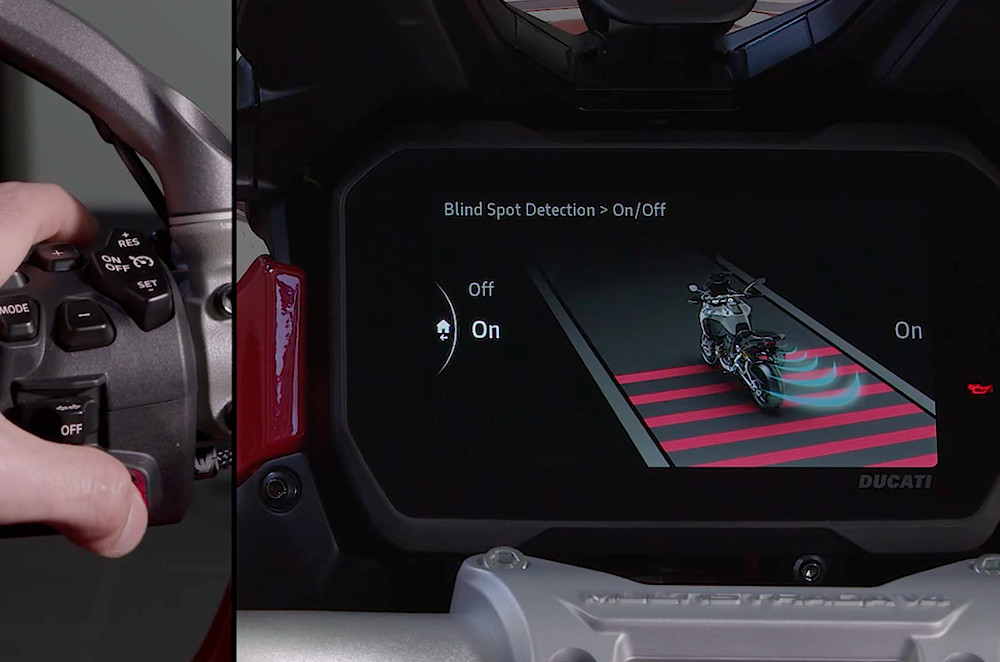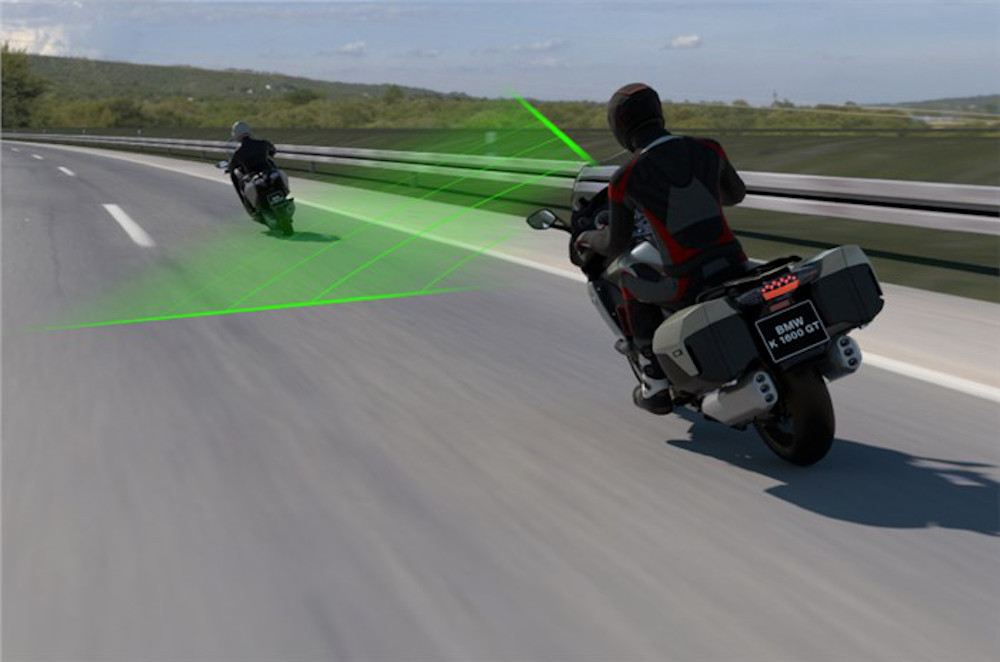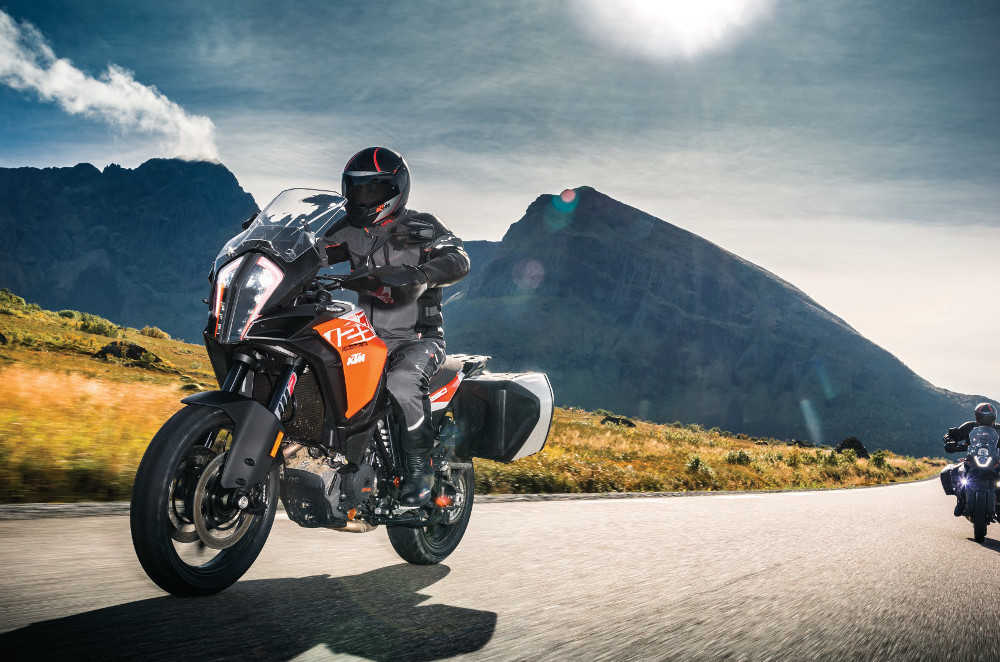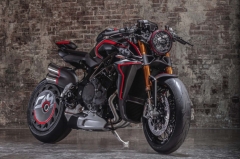How does adaptive cruise control work and what is it for?
Let’s take a closer look at this high-tech feature found on some of the fanciest motorcycles.

Adaptive cruise control is a relatively new tech innovation in the world of two-wheels. It automatically slows down and speeds up your motorcycle to keep up with the vehicle in front of you. Similar to a conventional cruise control system, the driver selects the top speed. However, adaptive cruise control is equipped with a radar sensor that monitors traffic ahead, and maintains a safe following distance with the vehicle ahead of you.That being said, this technological feature is fast becoming more common on high-end big bikes designed for touring. Let’s take a closer look at this feature and see how it works.
How does it work?

The yaw rate and vehicle speed are used by a radar sensor on the front of the motorcycle to calculate the distance to preceding vehicles. If this gap decreases, the system automatically slows you down and restores the correct space between you and the vehicles in front of you. With a simple push of a button on the handlebar, riders may easily adjust the speed and distance from preceding cars. Depending on the specific make and model, t he speed may then typically be adjusted to be between 60 and 160 kilometers per hour, while the following distance can be set to a variety of values.
Motorcycles equipped with adaptive cruise control typically have a fixed radar antenna that faces directly front. It has the ability to gauge how far in front of you an object is—typically another vehicle. It provides such data to the bike's computer, which controls the vehicle's speed as a result. It decreases the electronic throttle or even mildly applies the brakes through the anti-lock braking system when it senses that you are approaching a car in front of you to slow you down. The system also recognizes when said vehicle moves out of the lane, and brings you back to the higher speed initially selected.
What is it for?

The term "cruise control" refers to a mechanism that automatically regulates the speed of a motorbike. A servomechanism in the system assumes control of the throttle in order to maintain the driver-specified constant pace. As expected, this means that the bike’s ECU must have a way to control the throttle without rider input. As such, cruise control is almost always found on bikes with a throttle-by-wire system, and never on barebones bikes equipped with mechanical throttle bodies or carburetors.
Cruise control, regardless of whether it’s adaptive or conventional, is merely a convenience feature that allows your motorcycle to hold a certain speed, ideally on the highway, without any input from you, the rider. An adaptive system elevates the convenience and safety even further, by automatically reducing your speed in the event that the radar detects an obstacle, i.e., a car merging into your lane. In a nutshell, modern-day adaptive cruise control systems are about the closest thing to self-driving motorcycles currently available in the market.
What motorcycles have it?

These days, nearly all high-end touring and adventure bikes have cruise control as standard, however, only a few have adaptive cruise control. The most notable of which is the Ducati Multistrada V4, which was one of the first bikes released with radar-powered adaptive cruise control as standard. In its most basic form, the radar-equipped Multistrada V4 will set you back a hefty P1,810,000, making clear as day that radar-powered cruise control, as well as all the sophisticated tech that accompanies the Multistrada V4, is by no means cheap.
KTM has also dabbled in the world of radar with the new 1290 Super Adventure S. So, too, has BMW with its latest K-series of touring bikes. Other manufacturers like Kawasaki, with its upcoming Ninja H2 SX, as well as Honda, with its soon-to-be-released updated Gold Wing, are also expected to feature this cutting-edge technology. As you’re probably able to tell, adaptive cruise control is best suited for long-distance touring and adventure bikes.
Related Articles
-
Motorcycle 101: The inner workings of a slipper clutch / Featured Article
Slipper clutches are awesome as they make for more forgiving downshifts and a lighter clutch lever. Let’s take a closer look at them and see how they work.
-
5 things to remember when shopping for new motorcycle tires / Featured Article
Here are 5 things to consider when time comes for you to replace the tires on your motorcycle.
-
Here are some serious up and coming innovative motorcycle tech features / Featured Article
The motorcycle world is full of new and innovative technology. Here are a few tech features we can expect to see more of in the near future.
-
Floating versus solid disc brakes—what’s the difference and which one is better? / Featured Article
Floating discs or solid discs—which one is better and is it worth upgrading to aftermarket rotors?
-
Top 5 greatest motorcycle tech advancements of the modern era / Featured Article
Here are what we consider as the top 5 greatest motorcycle innovations of the past decade or so.
Latest Features
-
Last-minute Christmas gift ideas for your rider friends and family / Featured Article
Struggling to think of gift ideas for your motorcyclist friends and family? Read on to get some inspiration this gift-giving season.
-
Ride a naked sportbike? Get these 5 upgrades first / Featured Article
Here’s a quick list of 5 upgrades to your naked sportbike to enhance your riding experience.
-
Motorcycle 101: The inner workings of a slipper clutch / Featured Article
Slipper clutches are awesome as they make for more forgiving downshifts and a lighter clutch lever. Let’s take a closer look at them and see how they work.








